Corsair Carbide 330R Case Review
by Dustin Sklavos on August 25, 2013 12:00 PM EST- Posted in
- Cases/Cooling/PSUs
- Corsair
- ATX
While I'm curious to see how the Corsair Carbide 330R stacks up against alternatives like the Nanoxia Deep Silence cases and the Fractal Design Define R4, it's also worth paying attention to how it compares to the existing 300R. The 330R includes roughly the same cooling system, although it remains to be seen if the fans are identical. I suspect Corsair opted for quieter fans, but we'll see.
Ambient temperature during testing hovered between 23C and 25C.
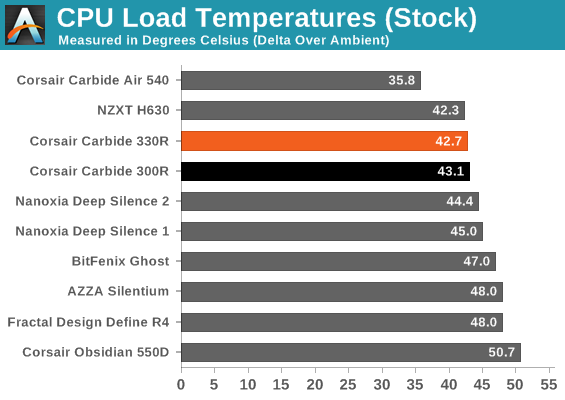
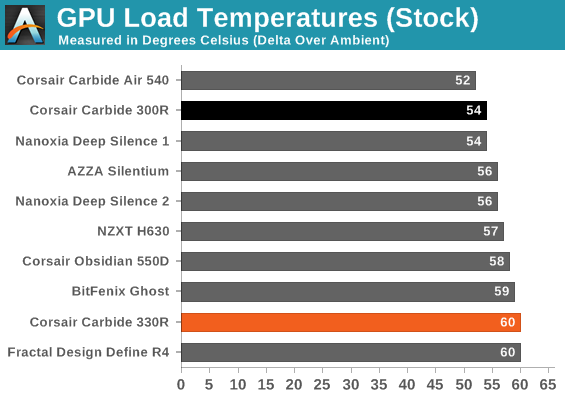
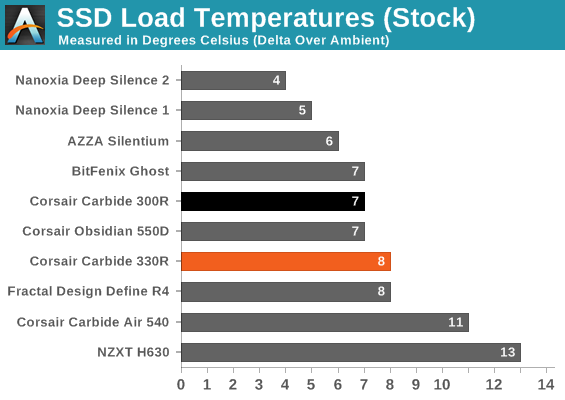
It's not unexpected that the 300R would outperform the quieter, more closed-off 330R; the CPU thermals are the only results where the 330R beats the 300R, and that's within the margin of error. The 330R does manage to post better thermals than Fractal Design's Define R4, though.
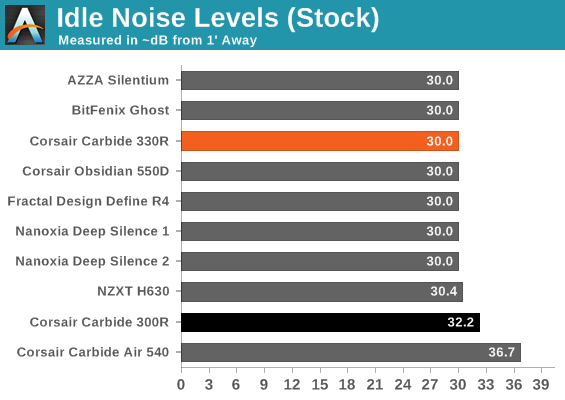

Interestingly, while the 330R is quieter at idle, the 300R is actually quieter under load. If you look at the temperature of the GTX 560 Ti, you'll see why: the 560 Ti runs much cooler in the 300R. Since graphics card fans tend to be among the biggest contributors to system noise, the hotter-running 560 Ti in the 330R is louder and overwhelms the acoustic material.
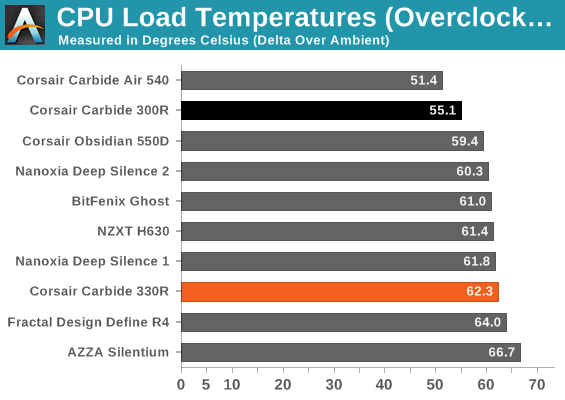
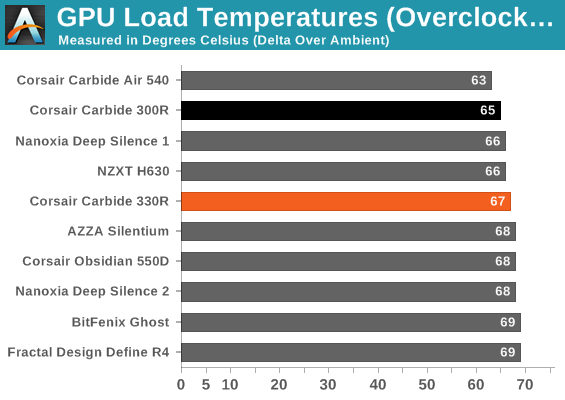
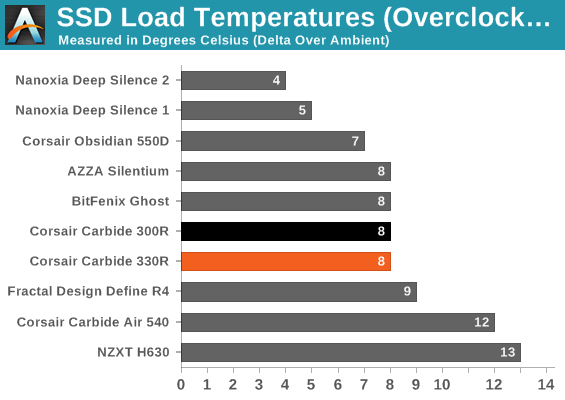
The trends largely continue with the overclocked bed. The 330R is able to consistently beat the Fractal Design Define R4 and mostly competes with the Nanoxia Deep Silence cases.
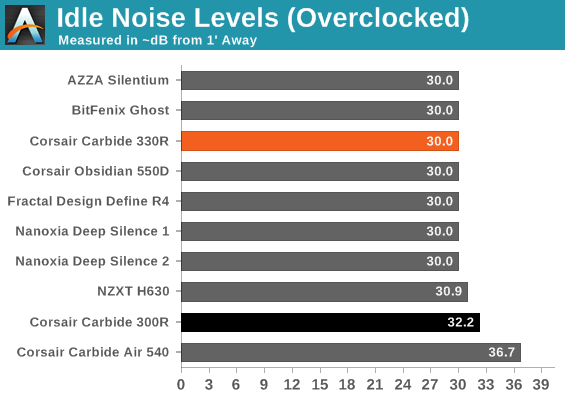
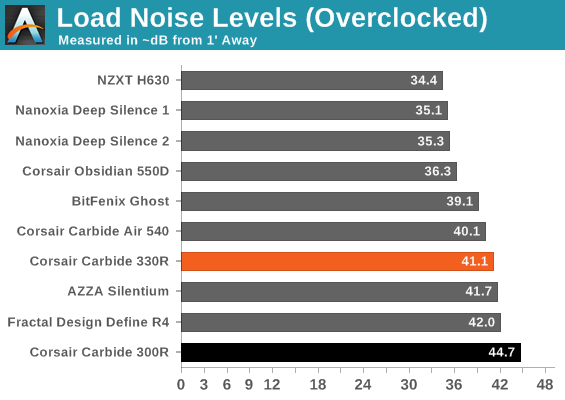
The 330R continues to beat the Fractal Design soundly, but Nanoxia's cases are much quieter while offering similar performance. Meanwhile, the 300R is essentially overwhelmed and the 330R is able to produce better acoustics under stress.
Our full fat testbed is going to seem a little unfair to a case that only has a 140mm intake and a 120mm exhaust, but it must be tested nonetheless.
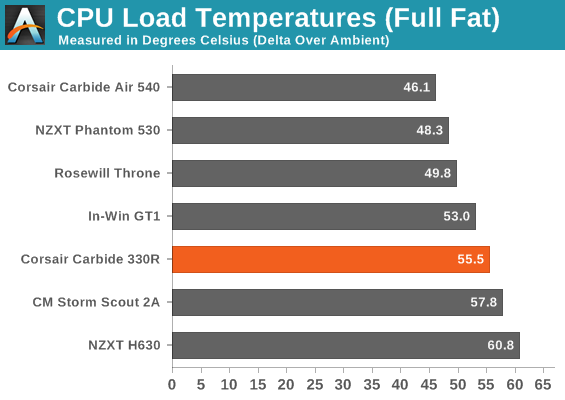
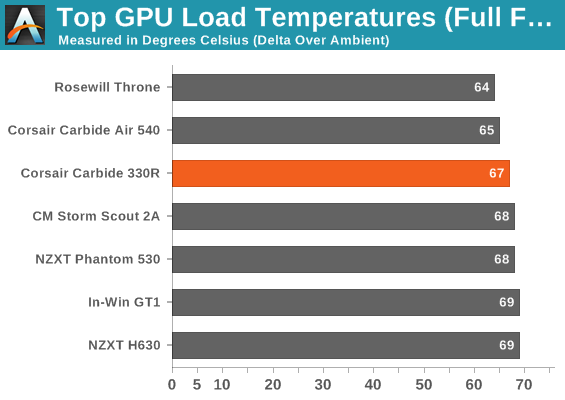
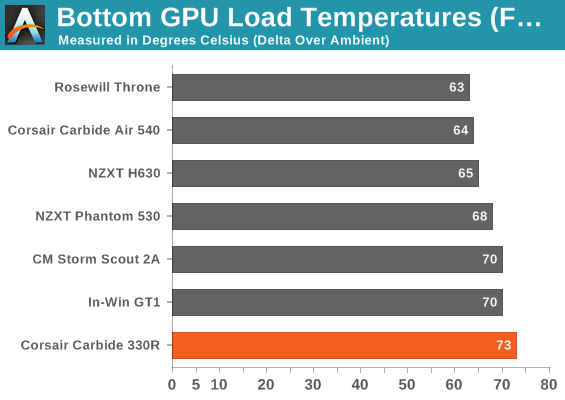
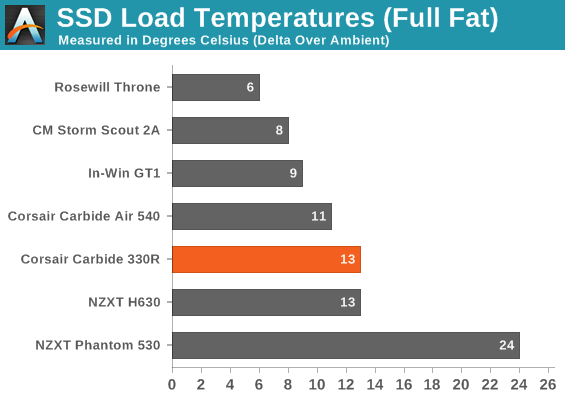

All things considered, the Carbide 330R is able to put in an acceptable showing. The hard drives and bottom GPU are cooking due to the lack of active airflow, though. This is definitely too ambitious a build for the 330R.
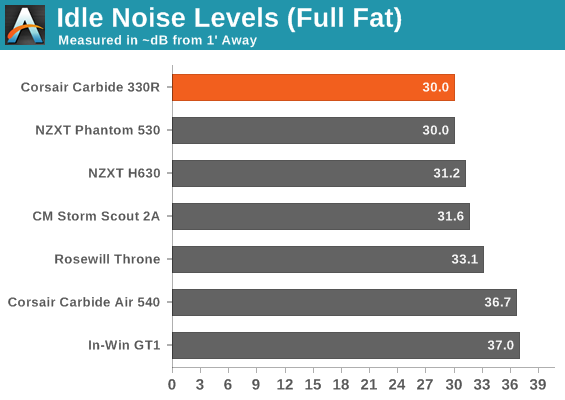
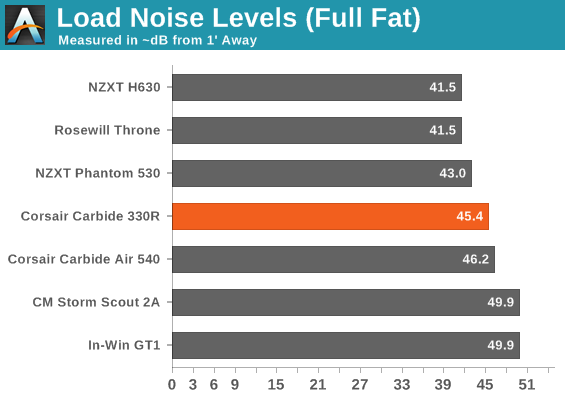
The dampening materials do a good job of keeping noise down at both idle and load, but heat does remain an issue for the 330R.










28 Comments
View All Comments
ShieTar - Monday, August 26, 2013 - link
I can't really imagine that being the noise floor, my mobile phone gets a noise closer to 20dB. I would assume it is rather that the equipment can not be well calibrated below 30dB, or that measurements below are just not repeatable over time-periods of several years.But I'd love to see a more detailed description of where the 30dB come from. Care to educate us, Dustin?
casteve - Monday, August 26, 2013 - link
Here's your education :)http://www.anandtech.com/show/5709/introducing-our...
The noise meter has a floor of 30dB.
Also, unless you've calibrated your mobile app with known good test equipment in someone's anechoic chamber, it's just flailing around. Pretty to look at, possibly useful to compare relative things (hey! the back of my PC is louder than the front!), but not a tool for absolute measurements.
ShieTar - Monday, September 16, 2013 - link
Thanks for the link. And as I suspected, it notes "The SL130 is rated to go as low as 30dB". The instrument will realize if it is measuring less than 30dB, the software will just refuse to put a number to those measurements as it can no longer be accurate in this region.That the difference to the mobile app, of course if it is showing 20dB it might be 25 dB in reality, but a silent room (no traffic noise nearby, no AC running, etc) will easily be below 30dB. If you can hear another person breathing, its probably closer to 10dB.
Its understandable and scientifically correct for Dustin to not post results below 30dB then (even if his equipment would make a guess), but in reality there is still a slight difference between a 30dB and a 25 dB installation. It is more relevant for people trying to keep their system running while they read/sleep in the same room, and generally unnoticeable whenever your PC is generating sounds/music.
briandel - Sunday, August 25, 2013 - link
The use of 'hail mary' in the article doesn't make sense. A hail mary would be a desperate attempt at something with a low probability of success. 'Slam dunk' would be more appropriate sports analogy.Amoro - Monday, August 26, 2013 - link
I think they did a worse job than the 300R.CPU Stock: 0.4 degrees C lower
GPU Stock: 6.0 degrees C HIGHER
Load Noise Levels Stock: 2.2 decibels HIGHER
Primoz - Sunday, September 15, 2013 - link
"Meanwhile, the 300R is essentially overwhelmed and the 330R is able to produce better acoustics under stress."This is prolly switched around?
gelatinous_blob - Thursday, October 3, 2013 - link
"I love the Nanoxia Deep Silence cases and would easily recommend one over the 330R"It would be good to elaborate on this. I'm evaluating cases and it would be good to know in what ways the Nanoxia is preferable.
Max22258 - Friday, October 31, 2014 - link
I have bought a 330R to replace an Antec case that I had. Right from the start I found my old Antec case with the side panel latch was a much better design then the corsair. I wish they would have panels that latches instead of the old sliding hook that are dated from the beginning of personal computer. I had problem installing the panel on one side when the computer case was upright. Also I do have a corsair power supply, when I installed the motherboard and the video card, the six pin connectors could not reach the motherboard and video card, I had to use an extension. Also when installing SATA cable for a drive, you should use the 90 degree connectors, mine were touching the side panels. At the top if you want to install the 140 mm fans, you cannot have the top panel installed, the clips for the top panel falls right on the mounting screws. They should have design the top panel to enable the mounting of the 140 mm fans. Also there was no manual, as I searched on how did they install theses fans. The foam covering must be removed and only one fan can be mounted.All of these points should have make your review, I have look for years at Arnand Tech for advice and reviews. I am quite disappointed with this review.
Max 22258